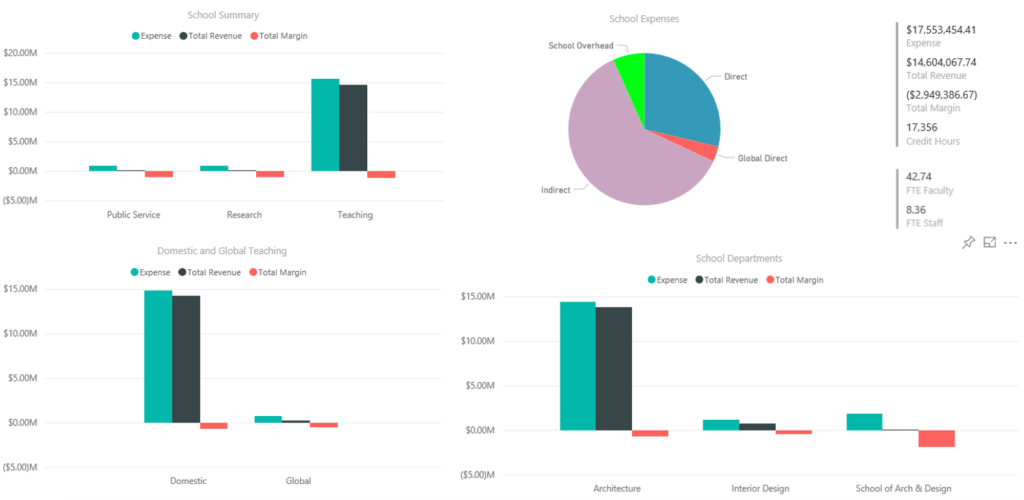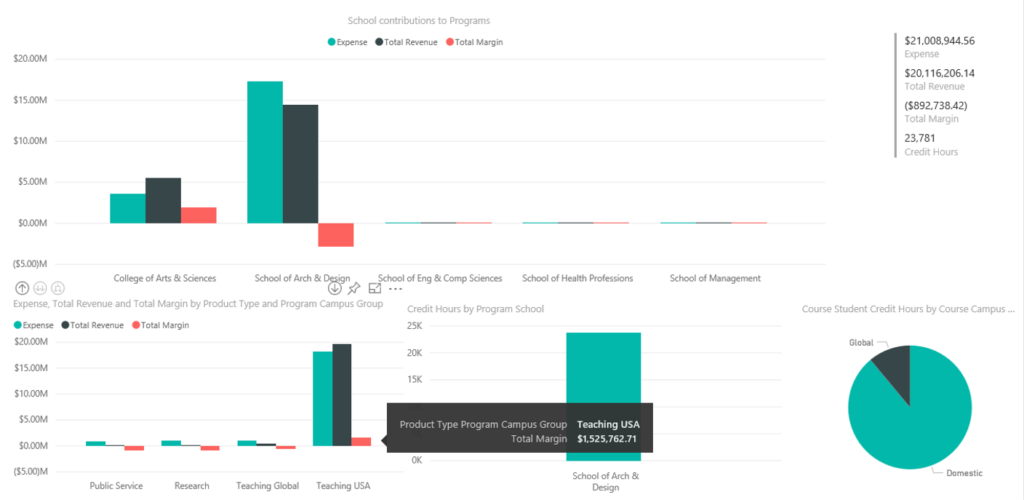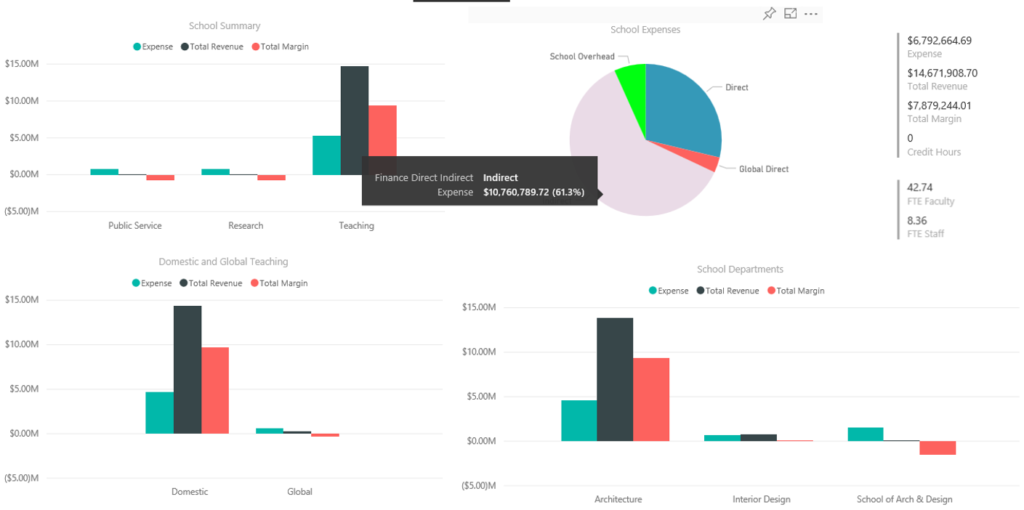Combining the analytic insights from using a tool such as Microsoft Power BI together with a robust cost model can open up a previously hidden set of views to management, particularly with respect to courses (subjects) and programs (degrees). In the past, this data has not purposefully be hidden, but rather it’s simply not captured for easy reporting and analysis.
The example outlined below is from our USA demonstration model so it uses ‘credit hours’ instead of EFTSL, but the same principles equally apply in Australia.
The Power BI report below shows the fully burdened cost of courses taught within the School of Architecture and Design. The Summary graph (upper left-hand corner) shows the revenue, expenses and margin associated with the school’s support of Public Service, Research, and Teaching. The total margin associated with Public Service is -$920k, Research -$940K and Teaching is -$1,090K. The table in the upper right hand corner of the report shows the total Expenses of $17.5m, Revenue $14.6m and overall margin for the School of Architecture and Design -$2.95m. The school teaches a total of 17,356 credit hours using 42.74 FTE of academic time.
The graph in the bottom left hand corner of the report shows just the teaching expenses, revenue, and margins broken down by domestic and global students. The chart in the bottom right hand corner shows the expenses, revenue, and margin broken down by Department. The bar titled School of Arch & Design (third bar) represents the combination of Public Service and Research related activities.
Although the School of Architecture and Design is losing $2.9m dollars on the courses they teach, you get a slightly different result when you look at the school from a Program viewpoint.
In the Power BI report below, the data is based on the courses the students pursuing a degree in the School of Architecture and Design undertook throughout the university. Based on this view, the School of Architecture and Design Programs are losing $2.8m when teaching their own students, but the College of Arts and Sciences have a positive margin of $1.9m teaching the School of Architecture and Design students their general education courses. When you examine the School of Architecture and Design from a Program viewpoint, they have a negative margin of only $900k. Thus if the decision was made to eliminate the School of Architecture and Design based strictly on the expenses, revenue, and margin depicted in the first figure you would not be considering the lost margin associated with those students in the rest of the university.
Another important view of the data is to consider the cost of non-teaching activities. In the bottom left hand portion of the above report, you will also see the School of Architecture and Design is making a positive margin of $1.5 m on their fully burdened teaching efforts which offsets the majority of their Public Service, Research, and Global campus activities.
Finally, when you filter the Power BI Report to just display the direct expenses, revenue and margin associated with Public Service, Research, and teaching within the School of Architecture (see below) you obtain a positive margin of $7.9m which is used to offset the School’s portion of allocated overhead expenses of $10.7m. If the School of Architecture and Design was eliminated a majority of the university overhead would still remain and have to be borne by the other schools.
By using these types of holistic models, Academic leadership can start to see the overall university impact of decisions they regularly make inside their schools. Of course, dropping an entire school is a major undertaking, and was used here for illustrative purposes only. This type of analysis can easily be performed down at the Program level as well, to determine which programs to maintain/grow or cut.


